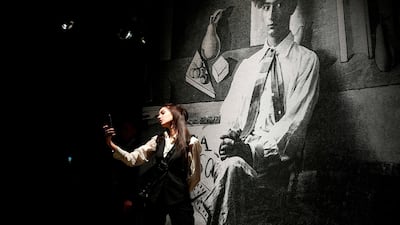How we decide to use modern technology is bewildering. Take, for example, deepfakes.
With advanced machine learning and artificial intelligence (AI) tools, anyone - including, of course, some less reputable individuals - can create shockingly realistic videos of just about any individual doing or saying just about anything. It’s like Photoshop on steroids.
But what if there was a positive role for the technology to play? Every generation is forced to reckon with how technology transforms culture. Just as photographs transformed how we understood painting, deepfakes are now altering how we understand and use video.
From videos of former US president Barack Obama saying disparaging remarks about Donald Trump to Facebook chief executive Mark Zuckerberg gloating about the amount of private data his company controls, deep fakes have permeated internet culture. Those that make headlines are often nefarious in nature and so it is no surprise that there has been a loud and public backlash against the technology. Facebook banned deepfakes that could “mislead users” in the run-up to the 2020 presidential election and Microsoft is working on a deepfake detection tool.
But if we consider deepfakes from this perspective of artistic production, we have some guides from the past to help with our challenge today. Walter Benjamin, the German cultural critic who lived in the early 1900s, wrote about how technological advancements of his day transformed art and culture.
In his landmark 1935 essay 'The Work of Art in the Age of Mechanical Reproduction', Benjamin argued that art is the product of a conversation between technology and society. The influence of technology on art is a complication, he wrote, and society has an essential role to play when accepting a new art form, and should rely on scholars and curators to offer context. Without trust in certain institutions, this process falls on its face.
Let’s apply this thinking to the deepfake debate. The reaction to deepfakes has been overwhelmingly negative and for good reason. They undermine our trust in media, art and information as a whole. But what would happen if we could enact safeguards against the nefarious use of deepfakes? A world of possibility opens up. After all, no one can argue that deep fakes aren’t innovative. Using advanced AI to replicate works of art or resurrect long-dead actors for starring roles in new films (as is the case with several actors in recent Star Wars films), is an innovative way of using the technology for society’s benefit.
Imagine creating a virtual museum full of the greatest works of art and film for places that otherwise would not have the funding or attractive location to access them. Using deep fake technology in such a situation could spread knowledge to virtually every corner of the globe.
At the Salvador Dali museum in Florida, for example, visitors can have the surreal experience of taking selfies with a life-sized deepfake rendering of the artist himself. Using archive footage, the museum was able to train an AI algorithm on Dali’s face and allow visitors to have a unique experience with the master painter.
Deepfakes are also being used as a vehicle for biting social commentary. In one video posted to Instagram by the artists Bill Posters and Daniel Howe, a fake Mark Zuckerberg outlined the sinister power of Facebook over its users. The speech startlingly revealed one perspective on Facebook’s business model, and was made more impactful by appearing to come right from the founder. Like any quality art in the past, this application of deepfakes is a way of holding a mirror up to pressing social issues and spurring debate.
The challenge of deepfakes is one of authority. Acknowledging and grappling with the connection between this emerging technology and the incredible levels of disinformation available on the internet today is critical. Enacting safeguards that restore faith in the safety of information on the internet is the first step to unlocking the positive potential that deepfakes can offer. We must overcome our trust deficit to unlock the true power of technology - but that trust must be earned.
Returning to Benjamin’s prophetic writing, we don’t need to fear new forms of art that are augmented by technology as long as we have a shared understanding that good governance will prevail. In the case of art, these authorities reside in museums and among historians.
Mary Ames is the director of strategy at Xische, a venture consulting and communications agency and publishing house in Dubai

